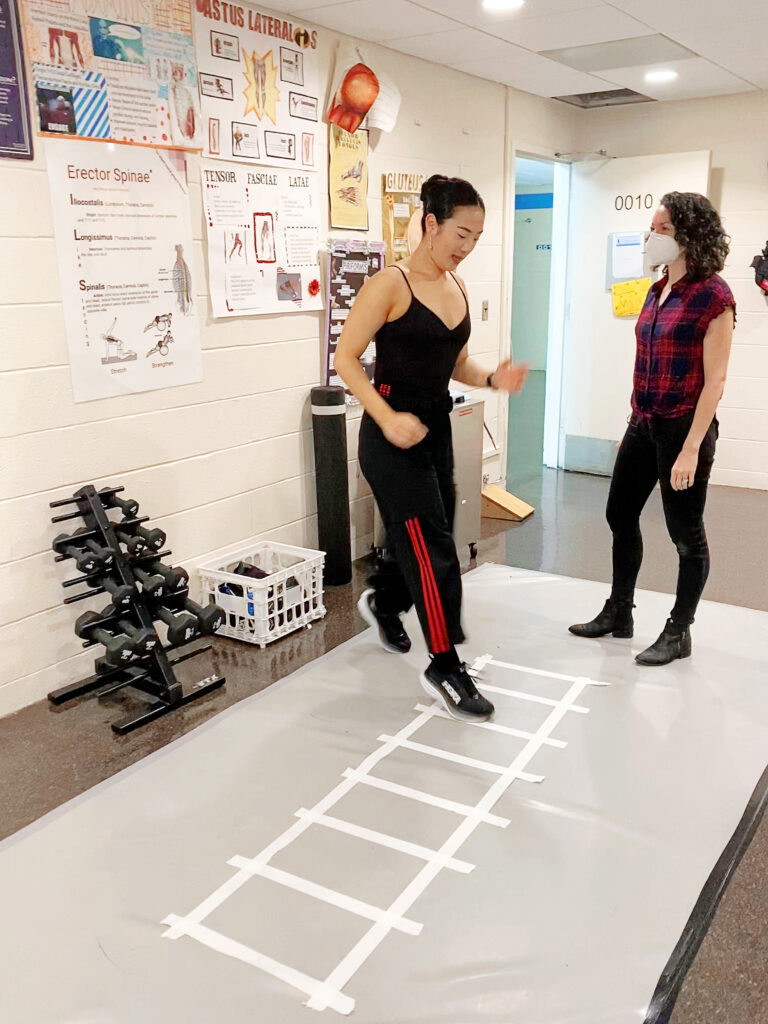How to Conquer Quick, Complex Footwork
Dancers of nearly every genre need fleet feet for dazzling, pyrotechnic footwork. But complex, quick footwork tests almost all the technical skills that dancers strive for—balance, coordination, speed, strength—and can also be a mental game, requiring intense focus and the right combination of freedom and precision. When these all come together, it can be thrilling for performer and audience alike. Don’t leave it up to chance—use these expert tips for confident, powerful footwork.
Train Your Brain
Attempting a fast sequence without being 100 percent certain where your feet should be is a recipe for getting your legs tangled. That’s why former Houston Ballet principal Lauren Anderson has her students start by just saying the rhythm of a footwork sequence out loud—usually with “ya-da-da-da”s—before trying it with their feet. “If you understand the rhythm, it’s much easier to get your feet to do what you want them to do,” says Anderson, who now serves as associate director of education and community engagement for Houston Ballet Academy. “It’s amazing how much quicker you get results.”
Visualization can also be key to nailing fast footwork, says Lauren McIntyre, an athletic trainer who works with dancers at NYU Langone’s Harkness Center for Dance Injuries. Repetition is essential to gaining confidence in such movement, but it’s important not to overdo it. “There’s so much power in reviewing it with your mind or doing it with your hands,” she says. “You can use your mind to integrate into your body without hurting yourself.”
Remember Your Upper Body
It’s easy to be so focused on what your lower body is doing that you neglect your top half. But incorporating your upper body is essential—both to giving your legs and feet a much-needed assist and to making the movement look effortless.
One cue that helped flamenco dancer and teacher Laura Peralta’s posture when she started learning footwork: thinking of lifting herself out of a pool. “It’s a totally different cue from ‘chest high, shoulders down,’ ” she says. “Lifting that little bit in your core frees up your legs so much.” Another simple way to ensure you’re dancing with your whole body, says Peralta, is to avoid marking your arms, even when you’re first learning tricky footwork.
If you’re struggling with fast foot movement, you may want to look to an unexpected but frequent culprit in the upper body, says Anderson: the head. “It’s the heaviest part of the body,” she says. “So if it is in the wrong place—a lot of times it’s going the opposite way—it’s going to jack you up.” Make sure you know where your head should be placed, says Anderson, and where you should be looking, since “your eyes can get you there quicker—your eyes can get to the finish line before your body does.” Mind that you aren’t holding tension in your neck as you power through footwork, too, she says.

Agility Tips From an Athletic Trainer
Fast footwork relies on agility, says athletic trainer Lauren McIntyre, who works with dancers at NYU Langone’s Harkness Center for Dance Injuries. Use her recommendations to build the speed and coordination needed for quick movement.
Rest up. Both mental and physical fatigue impair coordination, says McIntyre, so be sure you’re getting enough rest. Also take note of when in your training you’re tackling rapid footwork: “You may find that fast footwork at the end of a class or training session doesn’t yield the same results as if you’d gotten warmed up and then dived right into it,” she says. Ensure you aren’t skimping on carbohydrates, too—you need them to power quick bursts of energy.
Lean into athleticism. Athletes and dancers share a need for agility, and McIntyre says training with exercises more commonly seen on the field—like ladder drills and dot drills—can help dancers with dynamic movement. Plus, she says: “It takes some of the pressure off—they don’t feel they need to be as perfect because it’s so different.” For younger dancers, McIntyre recommends not specializing too soon; playing sports alongside dance can develop athletic agility.
Boost your balance. Often, footwork requires being on one leg and quick shifts of weight between the feet. McIntyre recommends cultivating the needed stability through balance work: Try a star excursion exercise, where you stand in the middle of a circle of dots and tap each one with the same foot. Working on an unstable surface like a wobble board can improve your reactivity, as can any exercise with perturbations (like when you’re balancing and a partner gently taps you). “That’s what it’s all about when we’re doing fast-paced movement,” she says. “How fast can our body react?”
Don’t get caught up in perfectionism. Fast sequences usually require lots of practice to make perfect. But running footwork over and over again when you’re tired isn’t always productive, and can lead to injury. Instead, says McIntyre, use visualization for extra practice, or allow yourself to leave a movement behind for the day and give your body time to process it.




